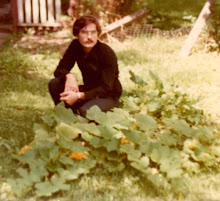In the back matter of Woolf by Madalyn Eastus is an epigraph drawn from Michel Foucualt.
The human intellect, from its peculiar nature, easily supposes greater order and equanimity in things than it actually finds; and while there are many things in nature unique, and quite irregular, still it feigns parallels, correspondents, and relations that have no existence.
To make believe is the source of making do.
Foucault is quoting Bacon. And the keyword is "equanimity".
The range and ambit of the term "equanimity" may have shifted since the Renaissance, still this excerpt from the
Meditations of Marcus Aurelius gives a flavour of what Bacon is signifying:
Country houses, retreats in the mountains or by the sea — these things men seek out for themselves; and often thou, too, dost most eagerly desire such things. But this does but betoken the greatest ignorance; for thou art able, when thou desirest, to retreat into thyself. No otherwhere can a man find a retreat more quiet and free from care than in his own soul; and most of all, when he hath such rules of conduct that if faithfully remembered, they will give to him perfect equanimity, — for equanimity is naught else than a mind harmoniously disciplined.
[from the Project Gutenberg transcription of Volume 3 of Library of the World's Best Literature, Ancient and Modern]
The passage continues and in the perennial vein of Max Ehrmann's
Desiderata "Go placidly amid the noise and haste [etc.]"
Cease not then to betake thyself to this retreat, there to refresh thyself. Let thy rules of conduct be few and well settled; so that when thou hast thought thereon, straightway they will suffice to thoroughly purify the soul that possesses them, and to send thee back, restless no more, to the things to the which thou must return.
The human intellect supposes and feigns. The power to form, shape or alter is the very power to stabilize and bring rest.
And such movement is exactly what this dynamic picture book of textile echoes does entrain.
And so for day 164
27.05.2007
